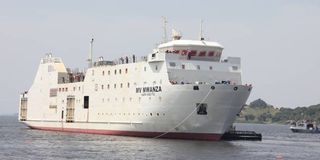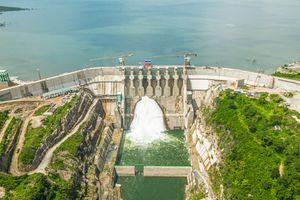MV Mwanza ‘Hapa Kazi Tu’ is a pride of Tanzania’s Made Products

MV Mwanza Hapa Kazi Tu. PHOTO|FILE
What you need to know:
- MV Mwanza's design includes an elevator section for people with disabilities, a clinic to provide health services, a disco and facilities for a music band to entertain passengers.
Yes, as a country we have done it! Kudos to the entire team involved in creating the MV Mwanza ‘Hapa Kazi Tu’ vessel, from its initial conception to the final construction of the impressive boat. Media reports indicate the vessel can transport 1,200 people, 400 tonnes of cargo, 20 light cars, and three trucks. What a remarkable accomplishment that makes Tanzanians proud.
According to the Deputy Minister for Works and Transport, Atupele Mwakibete, the vessel will “open new markets inside and outside the country by starting new trips that will help facilitate commercial, business, tourism and private trips.” He highlighted the potential economic benefit associated with the MV Mwanza Hapa Kazi Tu vessel. By providing improved transportation for commercial/business, tourism, and private trips, the boat can open up new markets both within and outside the country, leading to increased trade, investment, and tourism. After all, the importance of transportation infrastructure in facilitating economic development and growth cannot be gainsaid.
Likewise, we must address a critical question of why do we perform well at large-scale projects yet struggle much with manufacturing smaller items, such as utensils, needles, toothpicks, and matchsticks, which we continue to import. Furthermore, we import nearly 100 percent of the cars we use on our roads, resulting in a loss of employment opportunities for our youth.
The construction of the vessel in our Motherland presents a chance to take the manufacturing sector to the next level and reduce our reliance on imports. Before making my case, I would like to acknowledge and congratulate the manufacturing segments that have significantly contributed to the economy of our Mother Tanzania.
Tanzania has the cement industry, which has been expanding over the years, driven by the growth of the construction sector. Major cement producers have invested heavily in the country, increasing their production capacities and creating employments for Tanzanians.
The food and beverage industry has also been a great player in the manufacturing sector in Tanzania. We have a wide range of products like soft drinks, beer, and bottled water. These companies have created jobs and helped promote local agriculture by sourcing raw materials from local farmers.
The textile industry has also been growing, with some companies exporting their products. Then we have the steel industry that has been making strides in Tanzania. My concern is that, despite the successes in the cement, food and beverage, textile, and steel industries, still, the country relies heavily on imported products. This results in a missed opportunity of creating jobs/employment for Tanzanians, which could also boost the economy.
I feel there is a need for vital support and incentives from the government to encourage local manufacturers. The support includes policies that promote local production and discourage the importation of goods. However, local manufacturers should also be encouraged to produce products with required quality or standards. What about starting programs to provide training and technical assistance to local manufacturers, particularly Small and medium-sized enterprises (SMEs), to improve their skills and capabilities?
A little desktop research will tell you that the manufacturing sector requires a multifaceted approach, including improvements in infrastructure, access to finance, and skilled labour. In order to reduce reliance on the importation of goods, it is critical to invest in industries that can produce goods locally. In terms of day-to-day products, this means focusing on items with a high demand, locally produced but with a required standard, and at low costs.
What if we adopt small machines such as 3D printers, CNC machines, and laser cutters? These machines can create prototypes and produce small batches of products at a lower cost than traditional manufacturing methods. Small machines tend to be more flexible and can manufacture various products, making them ideal for small-scale manufacturing operations.




